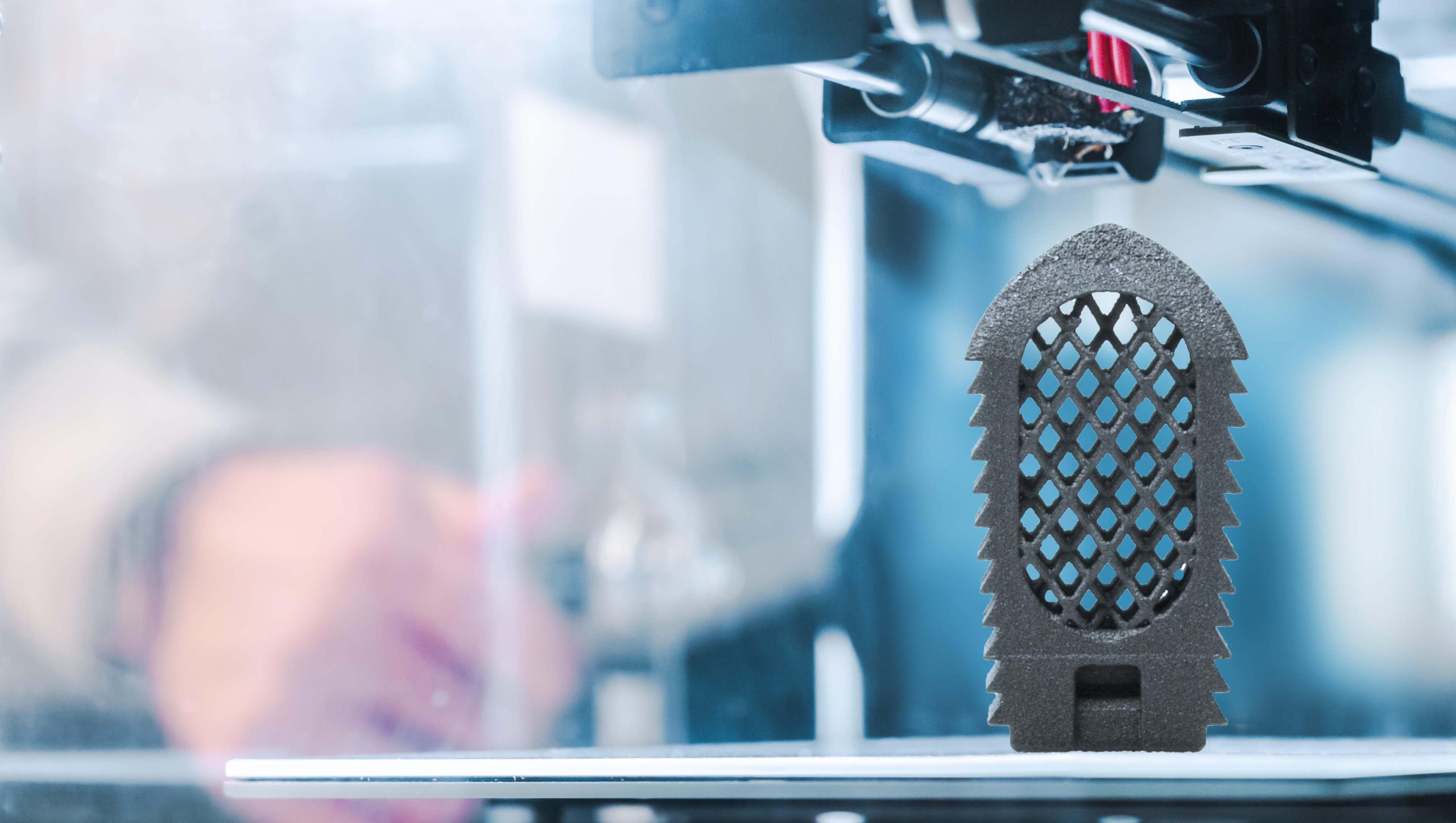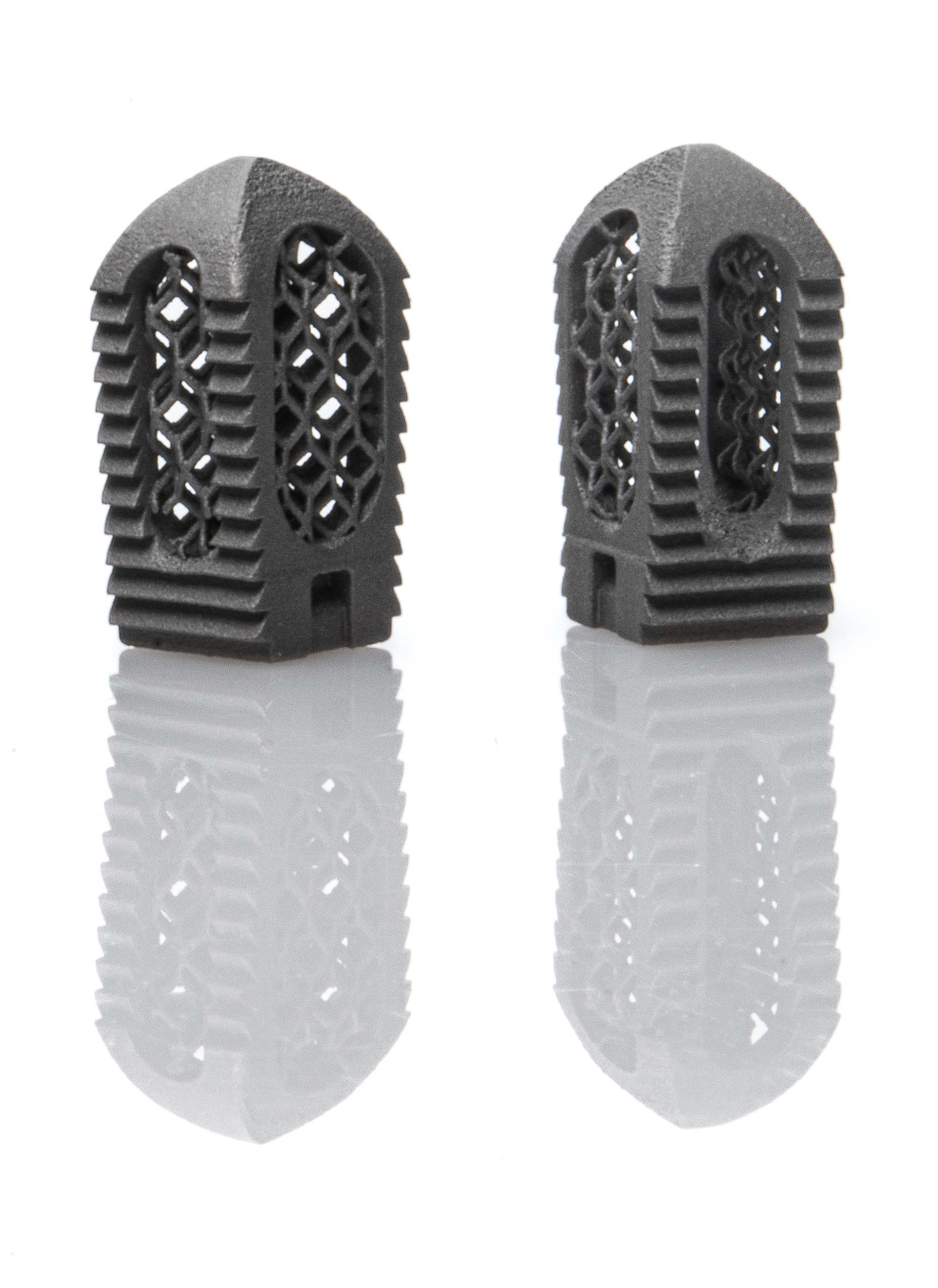Belgian contract manufacturer Amnovis and medical device service provider BAAT Medical have teamed up to offer an innovative and rapid turnaround process for 3D printed medical devices.
Pooling their expertise, the two companies are developing a complete process spanning initial design to manufacturing and validating end-use devices which will enable medical device start-ups and OEMs to benefit from faster time-to-market and deliver improved patient outcomes.
“We are extremely proud to collaborate with BAAT Medical,” said Ruben Wauthle, CEO and Co-founder of Amnovis. “We see great potential in jointly innovating various AM medical device applications.
“We know each other for years, share the same innovative drive, and collaborate intensively to better align design and development with material selection and manufacturing.”

A joint force in medical device 3D printing
Both Amnovis and BAAT Medical boast substantial experience in 3D printing medical devices for a range of certified end-use applications.
Amnovis has been deploying additive manufacturing to make high-end medical device products since 2008, and was reportedly among the first to use LPBF for printing titanium medical devices such as orthopedic and spinal implants. Most recently, the company was selected by medical device firm CairnSurgical to 3D print its patient-specific Breast Cancer Locator (BCL), a custom surgical guide designed to help surgeons locate and remove breast tumors more precisely.
BAAT Medical, meanwhile, has pioneered the development of 3D printed spinal fusion implants that have received numerous CE marks and US Food and Drug Administration (FDA) approvals. Over the course of 22 years, the firm has manufactured more than 50,000 implants to date and completed over 300 projects for some 200 companies.
“It is great to intensify our collaboration with the AM innovators of Amnovis, with whom we successfully worked with before,” said Gert Nijenbanning, Managing Director of BAAT Medical. “We believe that efficiency in development and production throughout the whole chain is essential to keep investments in innovations of medical devices feasible, especially for European markets where MDR is a reality.
“Together, we want to build on the complementary expertise of Amnovis and BAAT Medical to collaborate and take 3D printing of medical devices to the next level.”

Innovating medical device manufacturing
Amnovis and BAAT Medical are now combining their respective expertise and experience to offer a new and optimized turnaround process for 3D printing medical devices. The firms will work together to tune the design and development of various devices, material selection, and manufacturing of specific 3D printed medical device applications.
Working on a joint technology and application roadmap, the companies will actively validate new 3D printing technologies and set new standards for specific types of medical devices. The partnership will also see Amnovis and BAAT Medical investigate new 3D printing materials and post-processing methods, alongside exploring ways in which to automate and validate the process.
“As preferred partners, our joint offering comprises of the complete process for customers and prospects to aim high and move fast, while removing hurdles in medical device development, validation and manufacturing,” said Wauthle. “At Amnovis, we rely on our comprehensive AM workflow and production platform, which is entirely ISO 13485:2016 certified.
“Digital process automation enables us to provide full traceability and repeatability to flexibly scale up manufacturing of standard and patient-specific AM medical devices.”
Through the partnership, Amnovis and BAAT Medical are seeking to advance the business potential and time-to-market of new 3D printing technologies within the medical sector. By offering a novel, rapid turnaround process for 3D printed medical devices, the companies hope to encourage more innovative business models among medical device start-ups and OEMs, while also improving patient outcomes.
“As preferred partners, we are able to cover the complete process, from initial idea to a certified product,” said Nijenbanning. “We partner to optimally use the possibilities of current and future AM technologies as part of new business models for medical devices with improved patient outcomes.
“Amnovis and BAAT Medical, together, push the innovative edge of medical device OEMs and move faster through the development, validation and manufacturing stages.”

Regulating AM medical devices
Additive manufacturing is increasingly being used for the fabrication of patient-specific medical devices thanks to its customization, speed, and cost benefits. As the technology advances and opens up new applications within this field, the certification of 3D printed devices is becoming ever more important.
In October last year, global certification firm TÜV SÜD released an industry-first 3D printing-specific guide to repeatedly producing safety-compliant medical devices. The guide outlines the specific standards that manufacturers need to meet at each stage of the additive manufacturing workflow from qualification through to post-processing.
In December, Health Canada approved its first Canadian-made 3D printed medical implant, a customizable mandibular plate for use in reconstruction surgery, while the FDA issued a public call for comment on a future-proof regulatory framework it is working on to ensure the quality of 3D printed medical devices.
Most recently, standards developer ASTM International introduced a new standard, F3456, to provide guidance to medical device manufacturers on powder reuse within PBF 3D printing processes.
Subscribe to the 3D Printing Industry newsletter for the latest news in additive manufacturing. You can also stay connected by following us on Twitter and liking us on Facebook.
Looking for a career in additive manufacturing? Visit 3D Printing Jobs for a selection of roles in the industry.
Subscribe to our YouTube channel for the latest 3D printing video shorts, reviews, and webinar replays.
Featured image shows the 3D printing stage of Amnovis and BAAT Medical’s AM medical device workflow for a spinal implant. Photo via Amnovis.



